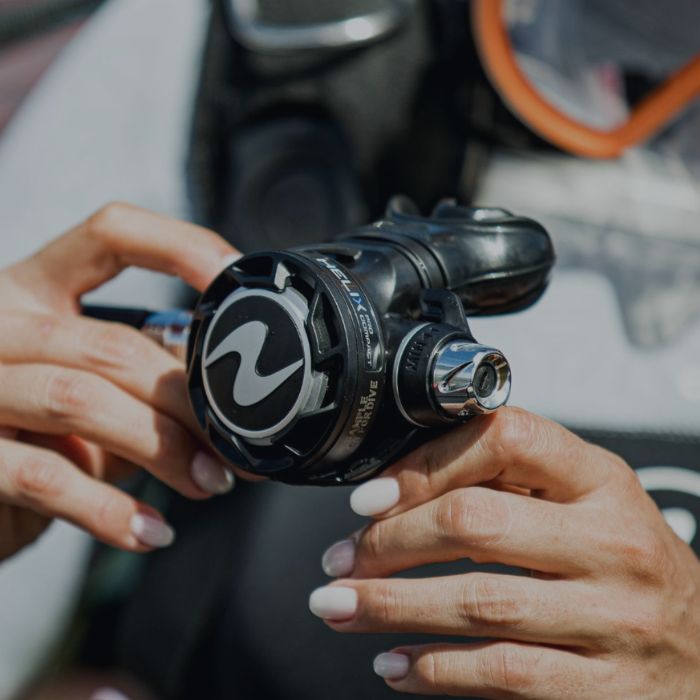
Blog
Table of contents

How to choose your dive regulator?
The ultimate guide for scuba divers
Diving is an incredible experience that opens a whole new world. But to fully enjoy it, you need the right equipment. One of the most crucial pieces of gear? Your dive regulator.
This device allows you to breathe effortlessly underwater, so choosing the right one is essential. With so many options available, how do you know which regulator suits your needs? This guide will help you make an informed choice based on your diving style, environment, and budget.
What is a dive regulator and why is it important?
Your regulator is the link between your tank and your lungs. It reduces the high pressure air from your tank to a breathable level and delivers it seamlessly. It’s also responsible for venting exhaled air.
A dive regulator consists of two key components:

First stage
The first stage connects directly to your dive tank and regulates airflow into your hoses. It reduces the high pressure air from the tank (typically 200–300 bar / 2900–4351 psi) to an intermediate pressure (about 8–10 bar / 116–145 psi), ensuring a steady air supply as you dive.

Second stage
The second stage is the part of the regulator you breathe from, through the mouthpiece. It further reduces the air pressure from the first stage to match the surrounding water pressure, making breathing easy. Some models come with an adjustment knob to fine tune airflow, allowing a more personalized and comfortable breathing.
At Aqualung, we revolutionized the diving world by inventing the very first dive regulator in 1943. Since then, we’ve been dedicated to designing and manufacturing industry leading regulators that offer superior performance, reliability, and innovation.
Choosing the right regulator is crucial, as it directly impacts your breathing effort, comfort, and even safety during dives. Great news! Our Regulator Finder is designed to help you discover the ideal regulator that matches your diving style.
Key factors to consider when choosing a scuba diving regulator
Which regulator connection is right for you?
Your dive regulator must securely connect to your tank, but different connection types suit different diving needs and environments:
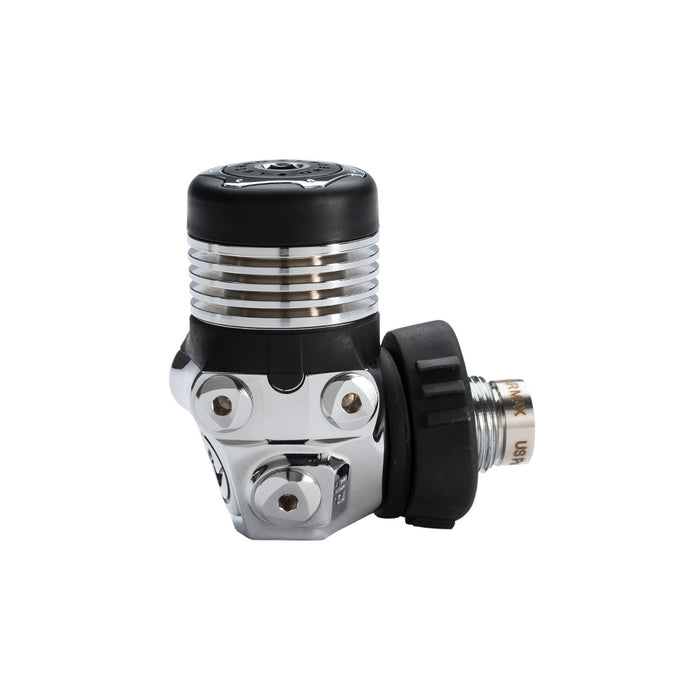
DIN (Deutsche Industrie Norm):
- How it works: Threaded and screws directly into the tank valve, resting against the seal on the inside of the valve, for a tight, high pressure seal. Unlike the Yoke connection, the seal is located on the regulator itself, not on the tank.
- Best for: High pressure tanks (up to 300 bar / 4351 psi), deep, technical or cold water diving.
- Advantages: Compact and ideal for extreme conditions.
- Considerations: Less common in tropical regions and North America.
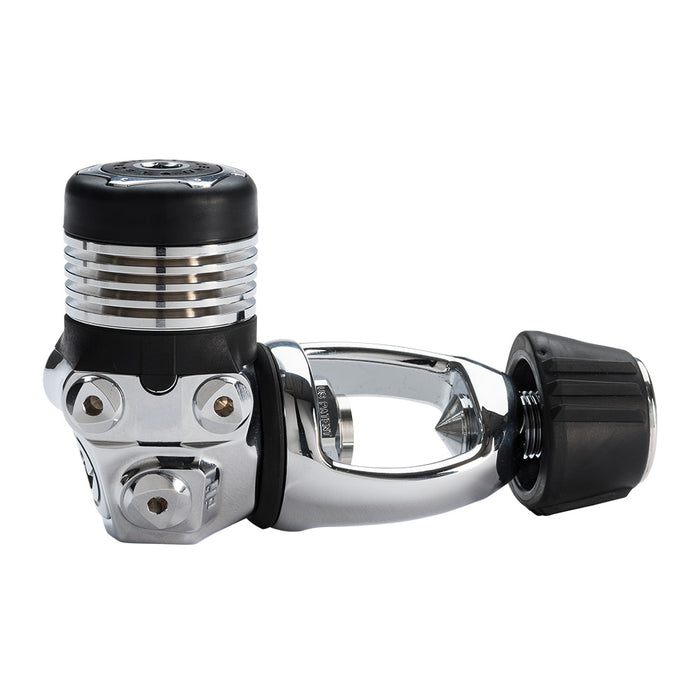
Yoke (A-Clamp):
- How it works: Clamps onto the tank valve, rests against the seal on the exterior of the tank valve itself, and seals using an O-ring.
- Best for: Recreational diving with tanks rated up to 200–232 bar / 2900–3364psi.
- Advantages: Widely compatible and easy to use.
- Considerations: Relies on the tank’s O-ring; less adapted to extreme environments.
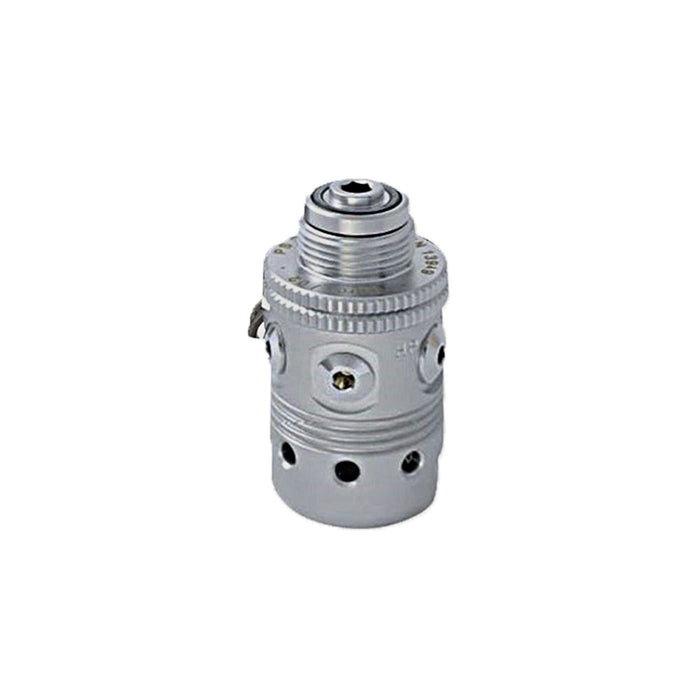
M26 (European Oxygen Connection):
- How it works: Similar to DIN, but designed specifically for high oxygen gas mixes (above 21% O₂).
- Best for: Nitrox and oxygen enriched diving.
- Advantages: Prevents accidental use of standard air regulators with high oxygen tanks.
- Considerations: Primarily used in Europe, and not all regulators support this fitting.
Choosing the right scuba regulator for your dive environment
Where you dive in plays a crucial role in selecting the right regulator.
- Warm to Temperate Waters (10-24°C / 50-75°F): In warm to temperate waters, dive regulator demands are less extreme. An unsealed regulator, which allows water to enter the first stage, is perfectly suitable for these conditions. These regulators are a great choice if you stick to milder environments.
All Aqualung regulators are designed to perform in these conditions.
- Cold Water Diving (below 10°C / 50°F): Cold water diving requires a regulator built to withstand extreme conditions. To prevent freezing and maintain reliable airflow, an environmentally sealed regulator is essential. By keeping water out of the first stage, it significantly reduces the risk of ice forming.
Several of our regulators are suitable for icy waters, but our best seller, the Legend Elite, is the top choice for cold water divers.
How often do you dive? Pick the best scuba diving regulator for your diving frequency
Whether you’re a recreational diver, advanced diver, or a professional diver, your dive frequency will influence the type of dive regulator you’ll need.
- Occasional & Recreational divers: A high quality entry level regulator would be enough.
- Frequent & Advanced divers: Look for a durable, high quality regulator with good comfort and performance.
- High frequency & Professional and Technical divers: Invest in top of the line, specialized regulators designed for heavy use and extreme conditions.
By choosing a regulator that aligns with your dive frequency, you ensure that it meets your needs for safety, comfort, and longevity.

Balanced vs. Unbalanced dive regulators: Which one should you choose?
As you descend, the pressure around you increases, which affects both airflow and breathing effort. Choosing the right first stage regulator ensures you maintain easy breathing throughout your dive, reducing fatigue and improving your overall experience. Let’s break down the differences between unbalanced, balanced, and overbalanced first stages.
- Unbalanced: An unbalanced first stage is a simpler and more affordable option. However, because it responds directly to changes in pressure, it may require more effort to breathe as you descend or as your tank pressure drops.
→ Best for: Recreational divers, beginners, or those who dive occasionally in warm, shallow waters. For scuba divers who only dive a few times a year, the difference between an unbalanced and balanced first stage might not even be noticeable.
- Balanced: A balanced first stage delivers steady and consistent airflow regardless of depth or tank pressure. This means that whether you’re at 10 meters or 40 meters, breathing remains smooth and effortless.
→ Best for: Frequent and deep divers. It’s the preferred choice for regular divers and those who enjoy deeper dives, as it ensures smooth performance in all conditions.
- Over-balanced: For those looking for even greater performance, an overbalanced first stage takes it one step further. This type of regulator is designed to make breathing feel just as easy at 40 meters as it does at the surface. Aqualung’s Legend range features an Over-Balanced Mechanism first stage, offering superior breathing efficiency at any depth.
→ Best for: Technical divers, extreme conditions, and those prioritizing top tier performance.
Choosing the right regulator will reduce your breathing effort, helping you save energy, and fully enjoy your dive. Try our Regulator Finder now and find your ideal match.
Travel friendly scuba regulators: lightweight options for divers on the go
Bringing your full dive gear on trips can quickly add weight to your luggage. If you travel frequently, a lightweight regulator is essential to keep your dive kit compact and easy to transport.
For divers on the move, compact and travel friendly regulators make a big difference. The Helix Compact Pro is an excellent choice for those seeking high performance without unnecessary bulk. perfect for frequent travelers who want reliability without extra weight.
How to choose a scuba diving regulator that fits your budget?
When choosing a dive regulator, your budget will influence the features and performance you get. However, it's equally important to consider your diving level and future goals.
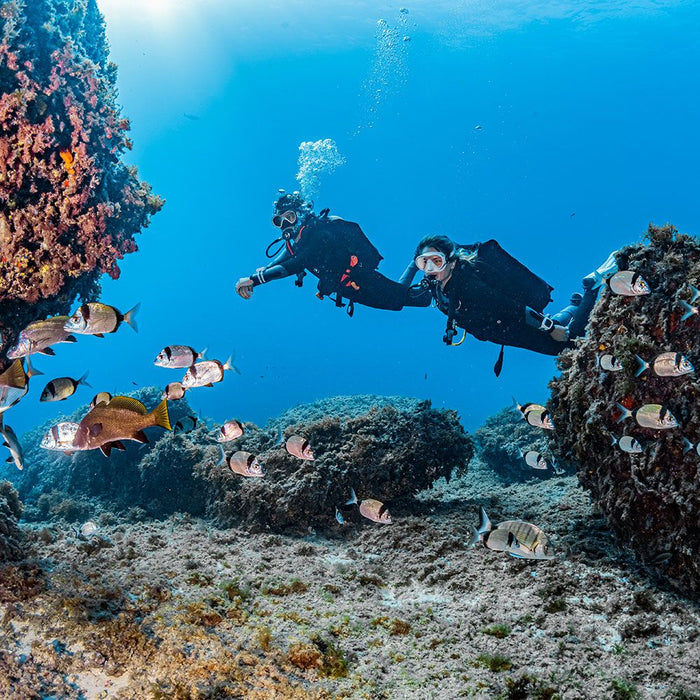
- Beginners & Recreational divers: If you’re new to diving or diving occasionally, an entry level regulator provides the essential functionality required for safe and comfortable shallow water diving.
- Frequent divers: If you dive regularly in varied conditions, a mid range regulator offers a balance of performance, comfort, and durability, ensuring a smooth experience.
- Technical & Professional divers: For those diving in extreme conditions, such as cold water or deep sea environments, a high end regulator with specialized features is a must have. These models provide optimal performance, enhanced breathing efficiency, and greater durability under demanding conditions.
While budget is important, never compromise on quality when it comes to your dive regulator. Always prioritize safety and durability over short term savings. With proper maintenance, a high quality regulator can last years, adapting to your diving journey as you progress.
Extra features that improve your dive experience
- Octopus: It is your backup scuba regulator. It’s used for emergencies when a dive buddy runs out of air, or if your primary 2nd stage fails. Its yellow design makes it easy to locate, and choosing a reliable model ensures easy breathing in stressful situations.
- Nitrox Compatibility: Nitrox compatibility ensures your regulator can safely handle enriched air (higher oxygen levels) for longer dives and reduced nitrogen absorption. Outside of Europe all of our dive regulators are suitable for up to 40%, and in Europe anything above 21% requires M26.
- Breathing Effort Adjustments: Some regulators feature adjustable breathing effort, allowing you to control airflow resistance based on your preference, making breathing easier or more resistant. Indeed, you may want to increase your breathing resistance in strong currents to help prevent free flow for example, or in cold water as a higher breathing effort can enhance freezing resistance.
Need help finding the right dive regulator?
Choosing the right dive regulator ensures enjoyable underwater adventures. At Aqualung, we continue to lead the diving industry with groundbreaking technology since 1943. Our Regulator Finder Tool makes it easy to find the perfect model based on your needs.
Final thoughts
Your dive regulator is more than just a piece of equipment, it’s your lifeline underwater. By considering your diving style, environment, and budget, you’ll find the perfect match. With Aqualung, you’re not just getting a regulator, you’re getting decades of innovation, reliability, and excellence in diving technology.
Explore our full range of high performance dive regulators.
Don’t Stop Here – Explore More!

